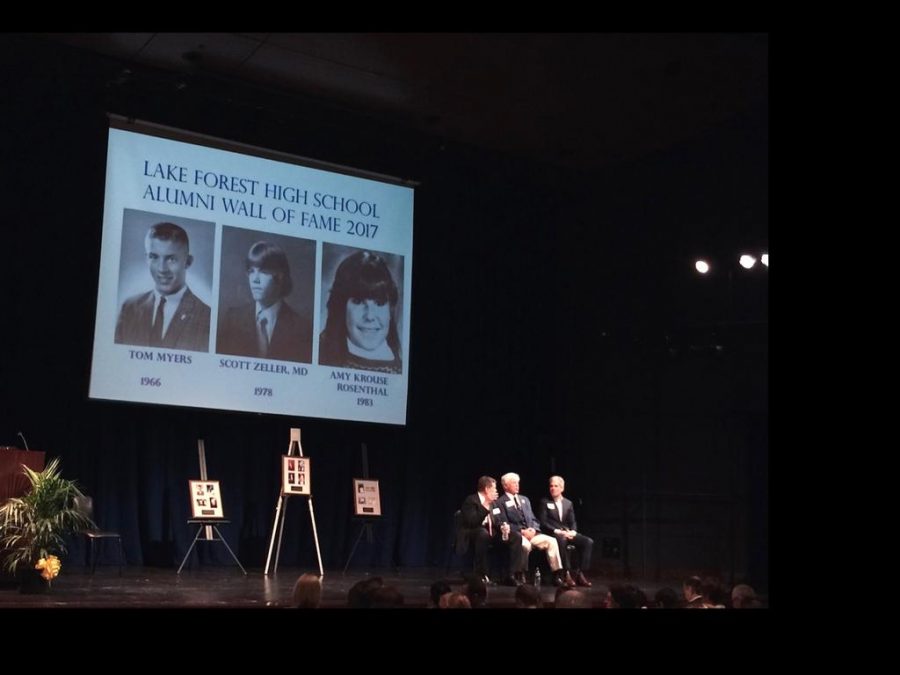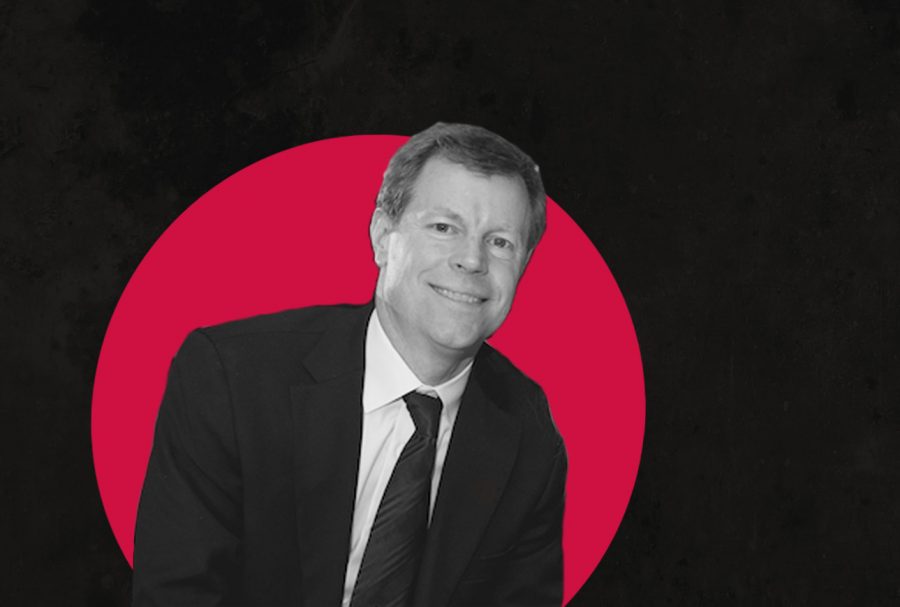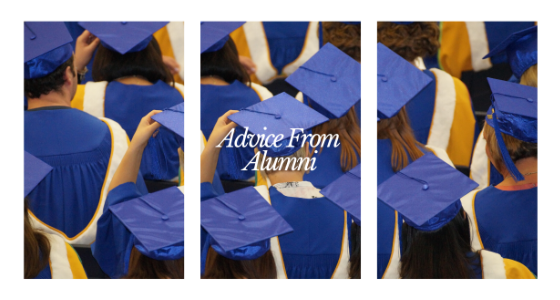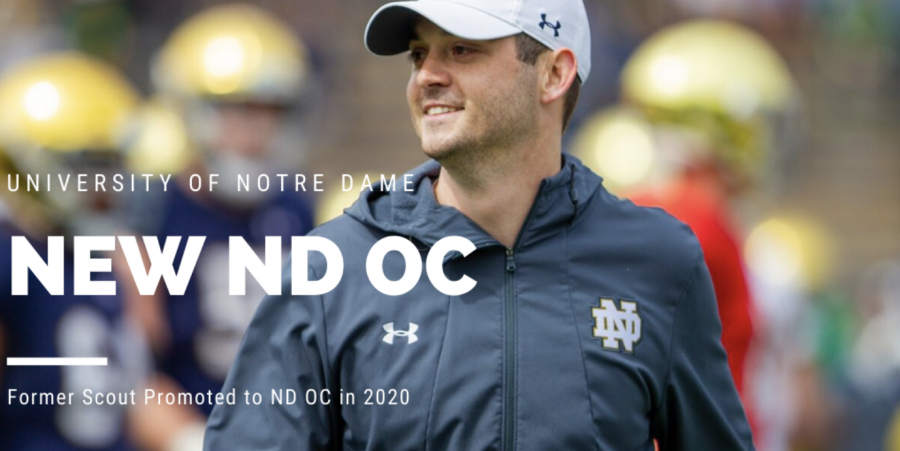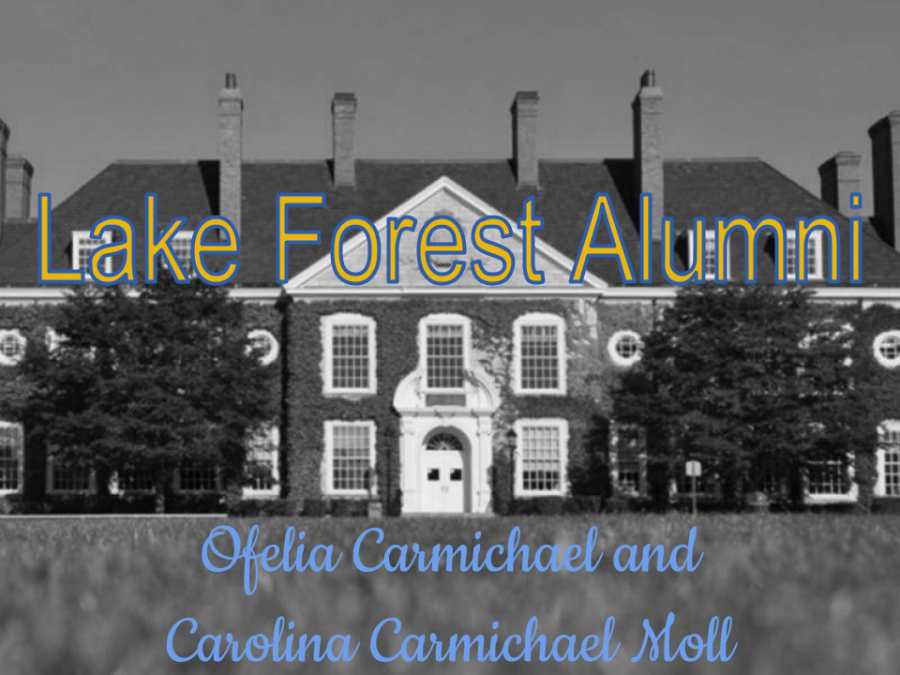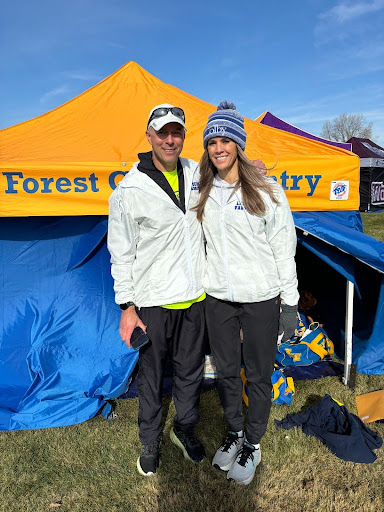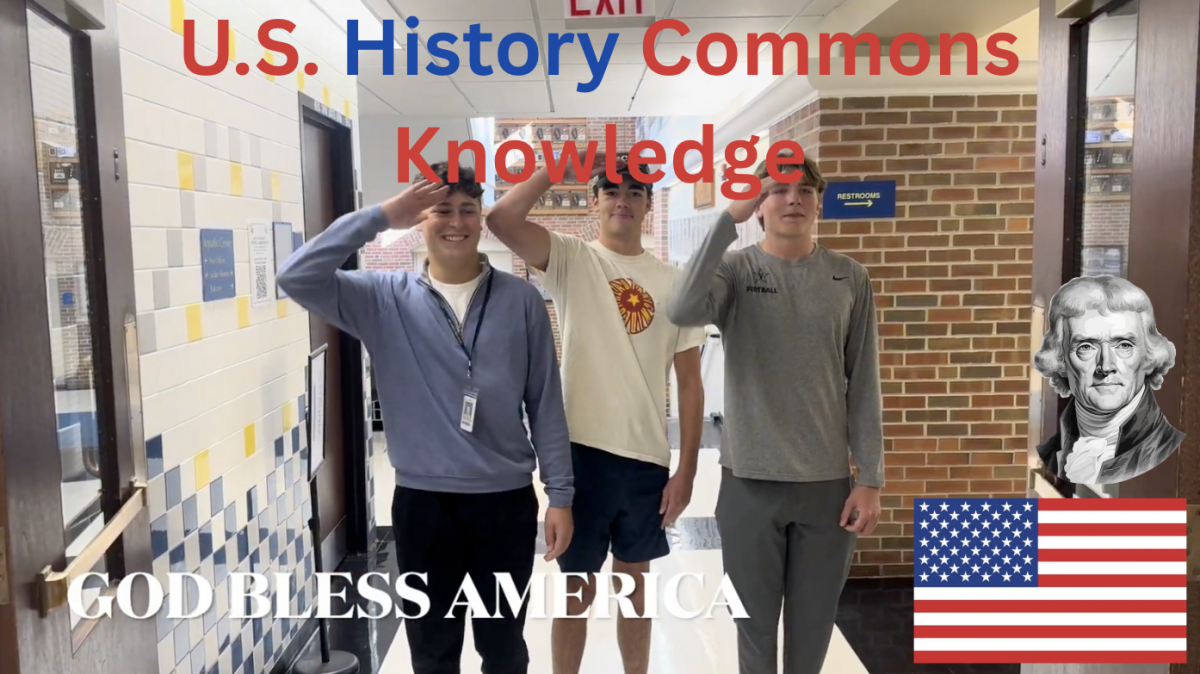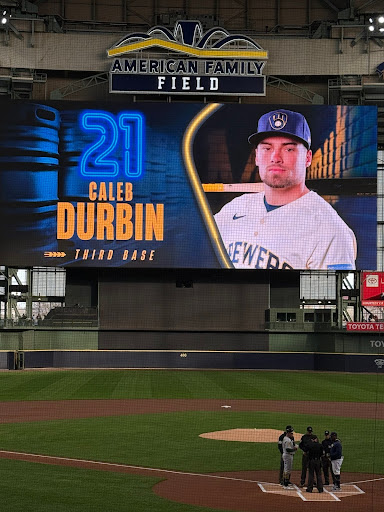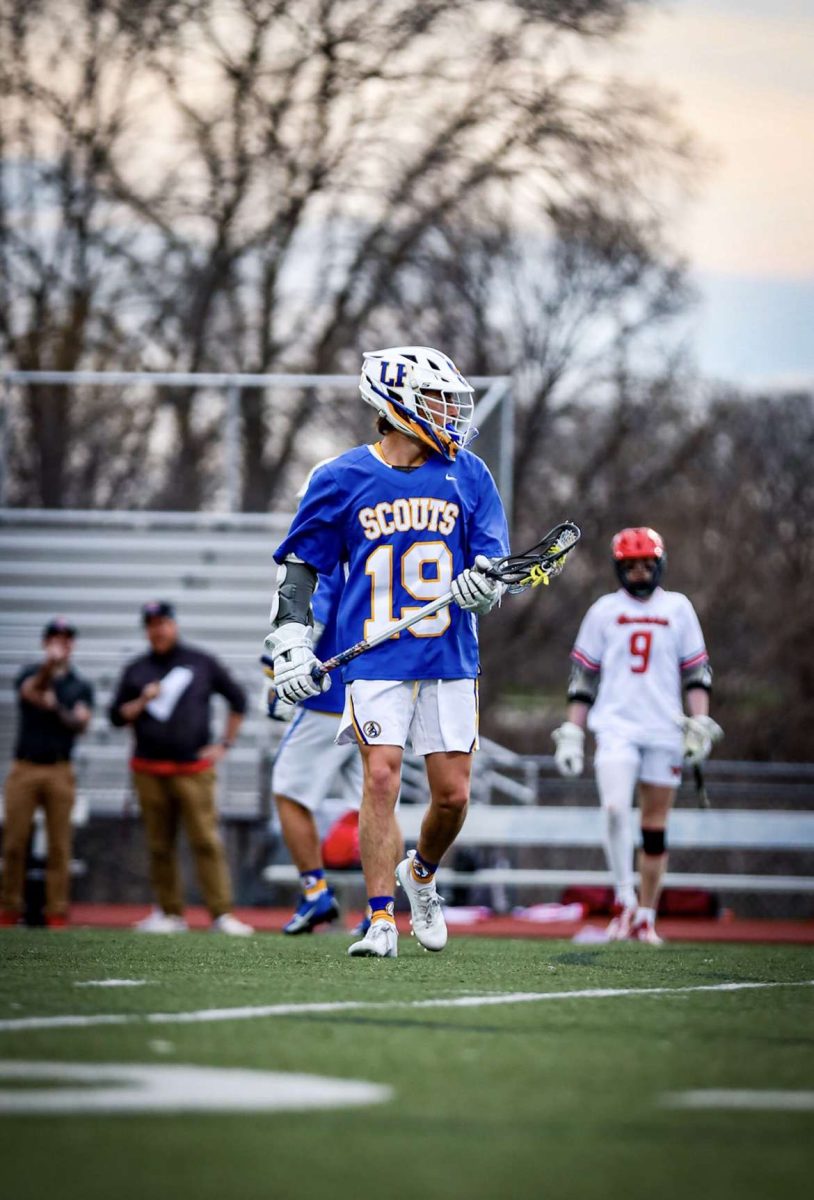This year’s Wall of Fame Induction honored three distinguished alumni: Dr. Scott Zeller of the Class of 1978, Tom Myers of the Class of 1966, and Amy Krouse Rosenthal (inducted posthumously) of the Class of 1983. Commended for the successes each have demonstrated in their respective fields—emergency psychiatry, coaching, and writing—plaques highlighting the alumni’s legacies were added to the school’s Wall of Fame on April 7th.
Walking throughout the hallways of the school, it isn’t an unusual occurrence to stumble upon another student stationed before the sea of glistening plaques and frames. Hundreds of Lake Forest High School students sift through the school’s Hall of Fame, a nook stationed between the commons and the foyer in front of the library’s entrance, multiple times a day. More often than not, the high school’s occupants will hurriedly scuffle through the small junction, simply passing through. But from time to time, you may come across one or two starry-eyed students, with necks craning to absorb as much of the rich cornucopia of Lake Forest High School’s history as they possibly can.
The area, dedicated to preserving the memory of Lake Forest’s distinguished former students, stands as a reminder to today’s freshmen through seniors of the futures they have the potential to build for themselves long after their graduation dates have passed. Those inspired students that stop by the quaint corridor might whisper, “wow, that could be me someday.”
Reinforcing the motivational sentiments that the Wall is intended to elicit, Dr. Holland imparted at the recent Induction Ceremony that “everyone has their own journey,” and that hearing the three Lake Forest graduates’ stories would aid today’s seniors in seeing “what the experience here can lead to.”
While listening to the speeches of Tom Myers, Scott Zeller, and Amy Krouse Rosenthal’s husband Jason Rosenthal, motivated seniors scattered throughout the Raymond Moore Auditorium—those able to envision themselves standing on the same stage thirty years down the road—may have found reassurance at the prospect of their attaining similar success in the future. “I could see myself on the Wall of Fame, too,” they may have contemplated internally. As the stories of the three alumni evidenced, the education and values that Lake Forest High School instills in its students does set them at an advantage.
Yet for every self-assured senior in the audience, every eighteen-year-old with college majors and additional school-plans in line, there inevitably exists another student plagued with uncertainty. Weighed down by ambiguity, these undecided students may not have empathized with the vibrancy of the alumni’s careers. Instead, they might have wondered, “Well, what does this mean for me? What am I going to do after high school?”
Fortunately for the hesitant and the uncertain listeners, the stories of Scott Zeller, Tom Myers, and Amy Krouse Rosenthal were not ones of fixed paths and absolute certainty. In fact, many might be surprised to learn that fifty-one, thirty-nine, and thirty-four years ago (each of their senior years), this year’s Wall of Fame inductees had no idea that they would eventually come to find such fruitfulness in the fields that they had.
Their stories did not begin with the triumphs that they have come to be associated with and celebrated for. Alternatively, the three shared similar stories of initial uncertainty and experimentation, of “letting life happen,” and, ultimately, of finding and following their own passions.
Dr. Scott Zeller (1978)
“How am I even going to get out of this school and move on and make anything out of myself?” was what Dr. Scott Zeller had asked himself thirty-nine years ago in his senior year at Lake Forest High School, an anecdote he shared in his Induction Ceremony speech. While “everybody else seemed to know what they were doing,” Dr. Zeller fell at the opposite end of the spectrum.
“You’ll hear people say, ‘go out, find what you love, and when you do, you’ll never work a day in your life.’ I’ve probably heard that one a hundred times already. You may find yourself wondering, as I had, “well, what if I don’t know what I love?” Here’s what I’ve learned in life looking back on it: even if those people sitting next to you who seem like they’ve got it figured out, they don’t. And if you don’t, that can actually be a good thing. It means you’re going to go and check things out.”
“You’ve gotta let life happen a little bit.”
And, “letting life happen” he did. Although prior to the end of his college experience, Dr. Zeller remained unsure as to what specific area he would pursue, the need for reform in emergency psychiatric care eventually suddenly came to his attention. “When I was in medical school, I thought maybe I was gonna be a pediatrician, or maybe I was gonna be a radiologist, or ten hundred other things,” he shared. “But then I started to find out more about psychiatry.”
Walking the audience through the aggressive and harmful methods that hospitals had formerly used to handle mentally-ill patients (methods that entailed strapping patients down and injecting unwanted medicine into their rears), Zeller expressed the need for change that he would go on to address and implement for the next thirty years. After having seen a “void in the area of the way that mental health patients are treated when they’re having emergencies,” he developed and implemented new, more efficient strategies for psychiatric emergencies based on communication, collaboration, and compassion. “When you treat people like human beings, they respond like human beings.” Dr. Zeller aided over 90,000 patients in his thirty years as an emergency doctor.
His patient-friendly ER models are recognized as the standard model and have been implemented internationally, his videos and textbooks taught on five continents. Dr. Zeller’s work as a leading psychiatric emergency expert earned him the National Council on Behavioral Health’s 2015 title “USA Doctor of the Year,” among various other awards highlighting his revolutionary methods (all accomplishments of which Zeller mentioned with great humbleness).
In hearing of Dr. Zeller’s achievements, the fact that he had once been—as many students are today—“frightened” at the thought of life after graduation was a shock. With a humorous and light-hearted, yet self-assured demeanor, any notion of his previous uncertainty seemed to have vanished. The journey and career of Dr. Scott Zeller, along with his outlook on life, incited encouragement and a desire to learn in the hearts and minds of the undecided seniors throughout his audience.
“I always kind of thought of it as a leaf fluttering in the wind. Your leaf might get caught on a branch at some point, but eventually it’ll land somewhere. There’s a place for every single one of us. If you don’t drive yourself to it, that place is gonna come to you. That place is reserved for you.”
Once involved in the field of emergency psychiatry, Zeller had found where his passions laid at last. “My fluttering leaf,” he shared, “had finally landed.”
Tom Myers (1966)
“I was always interested in sports, it was always kind of my strength,” were the words of long-time Lake Forest High School coach Thomas Myers. “I wasn’t a businessman, I don’t think. This kind of apparel,” he gestured towards his dress shoes and suit, “just isn’t for me!”
Having been an athlete in the glorious era of three-sported athletes—a time marked by the phenomenon that he believes “we miss now a days,” due to our being too “one-sported”—Myers had a general idea of what he wanted in a career. “There were a lot of other goals, but I wanted to be a baseball player initially. I wanted to play for the White Sox, but as I got older, I could see that it probably wasn’t going to happen,” Mr. Myers laughed. “I thought maybe I could be a sports writer, and that’s what I went into college thinking I would do that if I didn’t play baseball.”
Midway through his college situation, Myers’ coaches and teachers suggested he look into education, saying “we need teachers like you!” After graduating from Albion College with majors in both physical education and history and an English minor, as well as serving in Guam under Draft 39 for another two-and-a-half years, Myers landed a job teaching at Lake Forest High School. Although Tom Myers hadn’t graduated anticipating a future coaching career at the school, he would go on to coach three sports (some years, teaching up to five PE classes a day) at Lake Forest for close to forty years.
“I got into physical education, and it’s apparently worked out pretty well!”
Truly living out his three-sport-athlete philosophy, Myers served as head coach of Lake Forest’s football, basketball, and baseball teams throughout his tenure at the school from 1976 to 2010. Having won at least one Conference Championship in each sport, as well as third place in the 2003 Varsity Baseball State tournament, Myers’ leadership and success as an LFHS coach earned his induction into the IHSA Basketball Hall of Fame and Lake County High School Sports Hall of Fame.
Aside from specific coaching games and highlights (including his third place trophy at the State basketball game, and playing against Lane-Tech and Wheaton-Warrenville in football and baseball), one of the best parts about the job for Tom Myers was the apparel. “I got to wear sweatsuits!” he chuckled.
On ending up at Lake Forest High School again as a teacher, Myers considered himself lucky. “I didn’t have to jump schools. I started here, even though I had a wait a bit to get here. And, I wanted to be part of the staff! All the teachers that I could go and talk to, they solidified that thought that I wanted to be here. I came in after college just to talk to them, and thought, ‘that’s the kind of teacher I want to be.’ I was hoping to be like that, whether it was here or some other place.”
Going through his coaching career applying techniques he knew to work well (football called for emotion and excitement, while basketball and baseball required a “more controlled emotion”) and leaving behind those that hadn’t, Myers all the while learned from and grew with his athletes. “It was the athletes that carried me along.”
Being a part of Lake Forest High School for nearly four decades, Tom Myers got to witness his students and athletes grow over the years, even having coached students previously inducted to Wall of Fame. “Some of my coaches actually ended up being my assistant coaches, and I coached their sons. It was an interesting change of events.”
To be where he loved, doing what he loved most, creating a legacy of passion and athleticism, of “developing winners, not listing wins”—Tom Myers was (and, as he continues his coaching career at Lake Forest College, still is!) living the dream.
“Talk to your friends in college, the people in the area, who you work with. This is a special school. It doesn’t compare, it doesn’t come out equal, it comes above,” Myers relayed. “I got lucky. I got to be here.”
Amy Krouse Rosenthal (1983)
“Go to it. Ask not what the world needs. Ask what makes you come alive and go to it,” Amy Krouse Rosenthal urged listeners of her Waterloo TED Talk, “7 Notes on Life.” “What the world needs is people who have come alive. What makes you come alive? For me, it seems to be words and ideas and making things. What is it for you? Gardening, science, the xylophone, butterflies, economics, Indian spices? Go to it.”
Amy Krouse Rosenthal was, simply put, a “maker.” (The very inclusion of her initials in the word, she found, proved it. “Maker” could be rearranged into the anagram “ME AKR.”) She made books, and she made short films. She made radio shows, and she made TED Talks. She made people’s day.
Among the first of the many things she’d made since 2005 was her first children’s book, Little Pea. Over the span of the next twelve years, Amy would go on to publish over 30 children’s books, including Spoon, Duck! Rabbit!, I Wish You More, and a plethora of other colorful, New York Times bestselling titles. In addition to having authored the alphabetized memoir Encylopedia of an Ordinary Life, Amy made short films such as “The Beckoning of Lovely,” “The Money Tree,” and “The Kindness Thought Bubble.” The vibrancy and creativity that Mrs. Rosenthal’s work radiated never failed to stir and inspire the hearts and minds of all her readers and listeners.
“Amy loved to twist the normal way of things, especially in her wordplay,” shared Amy’s mother. “She’d just twist the story. There were always bits and pieces of life that she observed. What she did is, she payed attention to all the things the rest of us don’t pay attention to. Amy found interest in a piece of paper on the ground, which would trigger something in her mind.” Adding value to smaller details that one might overlook daily, Amy proved that worth and meaning can be found in nearly anything.
Among the last of the many things she’d made was a letter for her husband. The piece, “You May Want to Marry My Husband,” was published by The New York Times and read by over four million people within a single week. As well as penning her immense love for her husband Jason, and her wish for him to find love again in the future, the letter informed readers of the dire need for her to express the letter’s contents when she had: her time was limited. Ovarian cancer meant she’d be left to wish for more time. More time with her husband, more time with her children, more time “sipping martinis at the Green Mill Jazz Club on Thursday nights.”
Thrust into a position where the philosophy she had mentioned in her “7 Notes on Life” talk was to be considered of the utmost importance, Amy abided by the simple line: “Make The Most Of Your Time Here.”
Amy Passed away March 13th of this year, but her legacy and mark on the world—going beyond the art and works she left for her followers and loved ones—remain, and will continue to impact the world for years to come. The joy and warmth of Amy Krouse Rosenthal, seen at the center of her every book, film, and speech, moved innumerous hearts. “How wonderful she was,” Amy’s mother beamed. “We’ll miss her forever! She was just the most compassionate and kindest, most joyful person who taught us all to savor the unexpected, to try something different, to just go for it.”
Even prior to her diagnosis in 2015, Amy sought to embrace all aspects of life, to “beckon the lovely.” Being someone that “just wrote, and wrote, and wrote,” words played an important role in making her thoughts come to life.
Amy had participated in the literary club Young Idea as a junior (where “she started taking her writing more seriously” and her “apt to be a real writer” developed, according to her mother), but she instead chose to focus on advertisement in her college years. After having initially been a successful advertiser, Amy eventually made the “dramatic” transition to writing. Once she had her third child and found her maternity leave drawing to an end, an “epiphany at McDonald’s” was where Amy decided to give herself one year to have her first book published. Meeting her deadline and establishing herself as a writer, Amy “never went back!”
In her journey to becoming the renowned and celebrated figure that she was, Amy upheld the advice she’d share with listeners in her Waterloo TED talk years later: to figure things out as you go. “If it were imperative to have all the answers before beginning, no one would start anything! It’s okay to not have it all worked out before embarking. The various pieces will, indeed, slowly emerge like a Polaroid development.”
Creating a path, creating her story, creating something that goes beyond time, beyond words even—no one harnessed and embodied the omnipresence of love greater than Amy Krouse Rosenthal.
A doctor, a coach, and an author. “Aside from having graduated from Lake Forest High School, what could they possibly have in common?” one might have wondered prior to hearing the stories of Dr. Scott Zeller, Tom Myers, and Amy Krouse Rosenthal.
Instead, what the audience found was unifying concepts of passion, of pursuing what made each of them “come alive,” of putting in hard work, and of “letting life happen.” Originally, Amy Krouse Rosenthal was an advertiser, Tom Myers wanted to be a White Sox player, and Scott Zeller wasn’t even sure what he wanted to pursue. But, after letting life take its course—allowing their “leaves” to flutter around in the wind—each became devoted to pursuing and utilizing their passions, ultimately directed onto the bright paths they were meant to end up following.
By the end of the Induction Ceremony speeches, what the three alumni’s stories meant for the seniors (both the confident and the unsure) scattered throughout the auditorium was reassurance. Reassurance that their passions will come to them if they haven’t yet, reassurance their lives are not set in stone, and reassurance that Lake Forest High School does set them up for a fantastic future. Students left the ceremony inspired, and above all, confident that the most valuable asset of the school is, and always has been, the people in it.
“Lake Forest High School is a special place,” Myers expressed in his speech. “There’s a certain life that comes, too, when you go through the doors. When I retired, I missed the faculty and the student body every day. There’s always something good going on here.”
Although the successes of Dr. Scott Zeller, Tom Myers, and Amy Krouse Rosenthal can be attributed to far more than the years they spent at Lake Forest High School, their experiences here truly were the first step in a journey of a thousand miles.
“It all started here in a room like this,” Scott Zeller shared with one AP Biology classroom, “here at Lake Forest High School.”

